
For a quarter century I’ve been crisscrossing Britain and leading others in travel across our sceptered isle. This time, I thought you might like to come along.
EIGHT DAYS Across Our SCEPTERED ISLE

Wednesday
Ibreakfasted under a canopy of plane tree leaves at an outdoor café on the southside of Berkeley Square my first morning in London. A Mayfair walk zigzagged uphill to Bond Street and on north to Brooke Street and the Handel House Museum. I met Jennifer Dorn and her husband Richard there; we sat at a café in the square and visited over coffee. Next, I was off to the Press View of the Summer Exhibition at the Royal Academy, ducking through Burlington Arcade as a shortcut. I ran into Lizzie Meadows, to our mutual surprise. She was at the RA for Mayfair Life, whose current issue features her profile of Royal Academy president Sir Nicholas Grimshaw. We’d already planned to meet Friday in Norfolk.
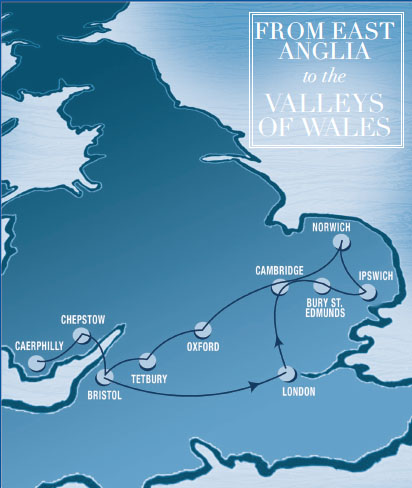
That afternoon I visited the Dickens House Museum in Bloomsbury to take some pictures, and ate a late lunch baguette in Red Lion Square (see “Streetlights,” September 2006). At 6:30 I rendezvoused with old friend Kate Levy, head of production for Avanti Screen-media. We caught up over drinks at Shepherds Tavern. When she whooshed out to the suburbs, I went out for the evening. It was hot in London, and the English summer twilight lingers after 10. I walked up Piccadilly and Shaftesbury Avenue to the Punjab. It was wonderful to see Mr. Maan again and to present him with British Heritage copies carrying Jennie Dorn’s story on the Punjab (see “Historic London Dining,” May 2006). The pappadoms and prawn bhuna were very bliss. Dark was falling, and the city was taking on its night pulse as I strode back through Soho and Carnaby Street to the quieter precincts of Mayfair.
[caption id="HandsAcrossTheSea_img2" align="aligncenter" width="755"]
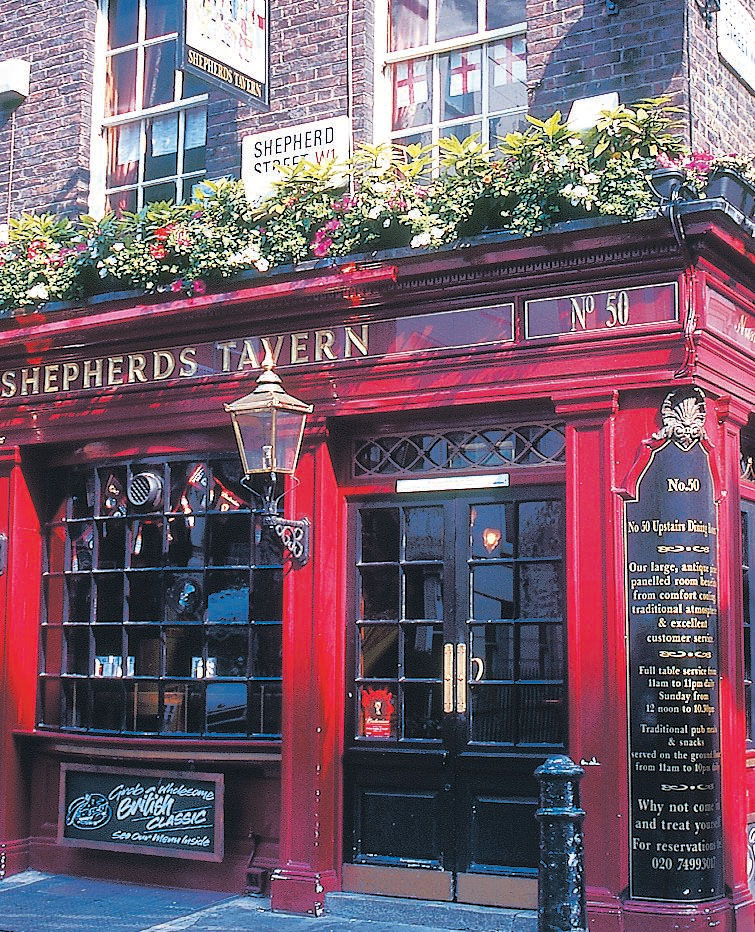
Thursday
[caption id="HandsAcrossTheSea_img3" align="aligncenter" width="918"]
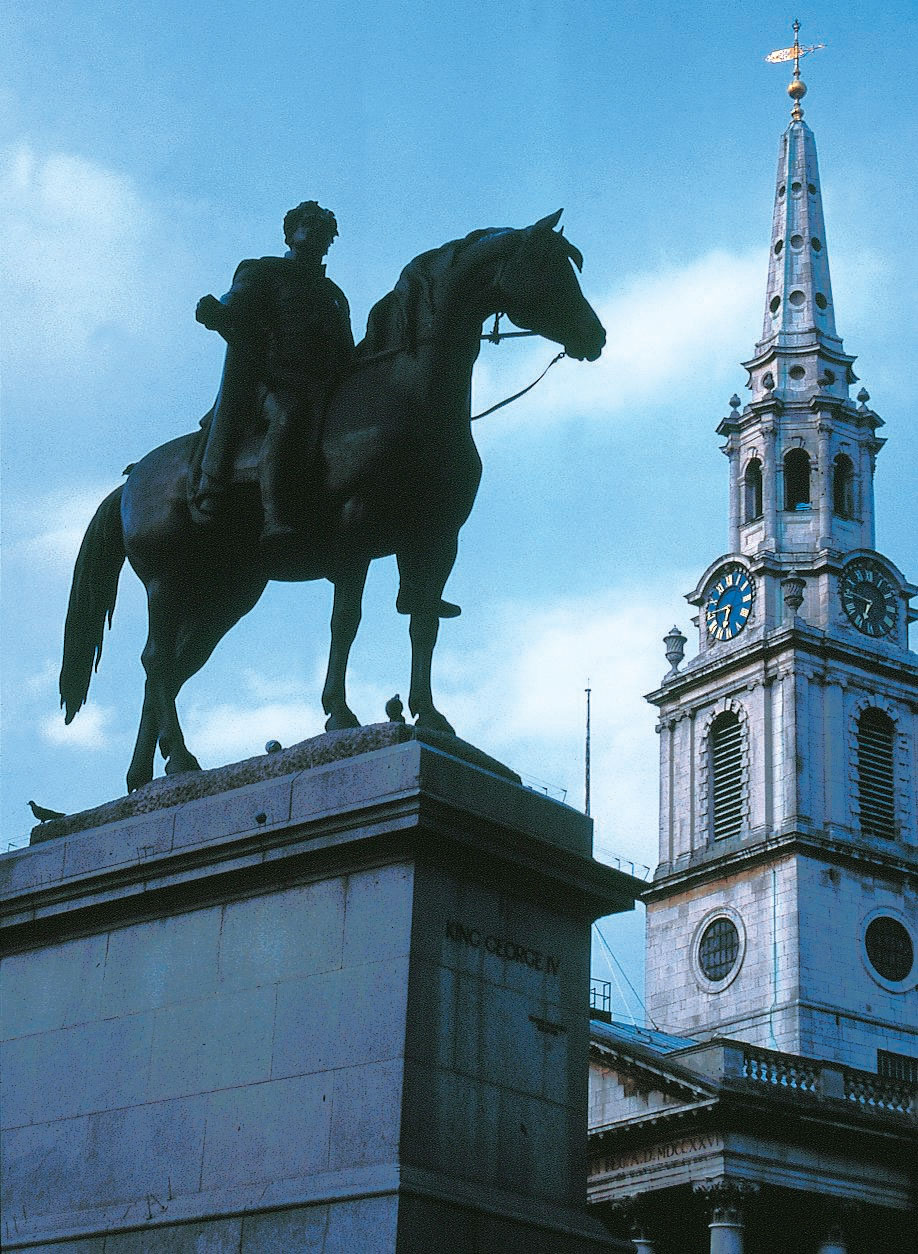
Ienjoyed the eggs and toast by an open window in Shepherds Market and set off across Green Park. The only way to see London is on foot, and I needed fresh pictures. The crowds were already gathering in the precincts of Buckingham Palace for the Changing of the Guard. I crossed the Mall into St. James’s Park, long my favorite of the “lungs of London.” Its bedding flowers, waterfowl and dells make a refreshing country garden oasis. My destination was the Barclays bank just across Victoria Street from Westminster Abbey. From there, I walked up Whitehall and across St. James’s to the Visit Britain Centre on Lower Regent Street. It was time to catch up on what’s happening in Britain for visitors, and to catch up on my e-mail at the public Internet station.
By late afternoon I was in Leicester Square and went on across St. Martins Lane toward Covent Garden for an important mission at the Covent Garden Underground Station. I worked my way down Long Acre to Trafalgar Square (the newly pedestrianized piazza really is a great improvement) and through Admiralty Arch to the Horseguards Parade. The massed bands were Beating Retreat in anticipation of Trooping the Color. About 9:30 I nibbled olives and chicken wings at a tapas bar off Hertford Street.
Friday
After a cab to Liverpool Street Station, I grabbed a baguette for breakfast while waiting for the Cambridge train. From the Cambridge station, I walked along cobbled pavement through quiet residential streets a mile and a half, my wheeled suitcase rattling the whole way, to pick up my appointed rental car. They gave me a little burgundy Peugeot hatchback. Mercifully, it had air-conditioning. England was hot and humid, with temperatures 28-30 degrees Celsius. Tooling on up the A10 to Ely, I met Jim and Kasey Hargan for lunch at a riverside pub in the shadows of Ely Cathedral.
[caption id="HandsAcrossTheSea_img4" align="aligncenter" width="575"]
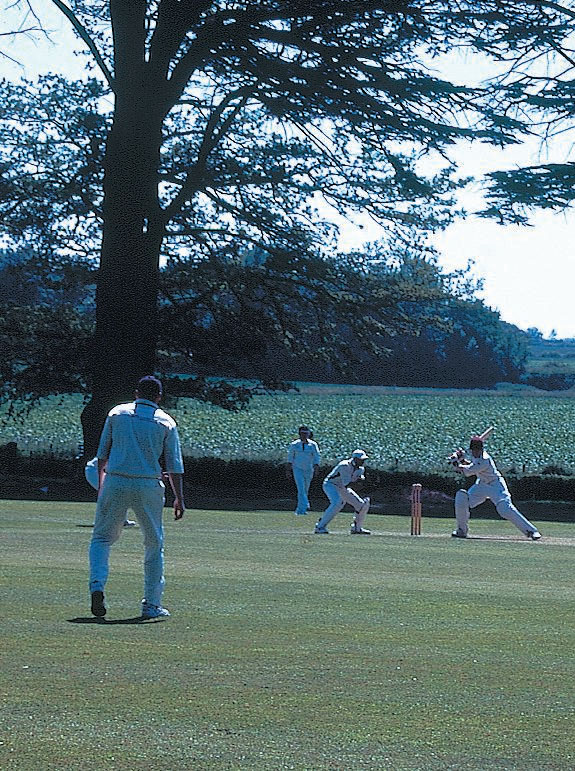
From Ely, I had about an hour’s drive south through Newmarket and Bury St. Edmunds to make a late afternoon appointment at Otley Hall, just north of Ipswich. Otley Hall’s owner Ian Beaumont took me exploring the great 15th-century manor and its eclectic 10 acres of gardens. From Otley, it was another hour’s drive north on the A140 toward Norwich. I met up with Lizzie Meadows and her 4-year-old daughter Isabel on the village cricket pitch in Brooke. All the kids in the village and their parents, it seems, turn out on a Friday evening for instructional cricket for the little ones, and beer and barbecue for the parents. I chatted with a local Conservative activist and folks whose business was agriculture, and good conversation continued into the Kings Arms over a pint.
Saturday
Lizzie and Isabel whisked me off in their Beetle convertible across the country lanes of Norfolk. We visited an old WWII bomber field at Seething, where the air command and control tower has been restored. Small planes still use the disintegrating landing strip. Then, we turned north toward Norwich to visit the Sainsbury Centre for Visual Arts on the campus of the University of East Anglia. Recently opened again after a major refurbishment, the Sainsbury Centre is among the most important university museums in the world, housed in a building almost as notable for its architecture and engineering.
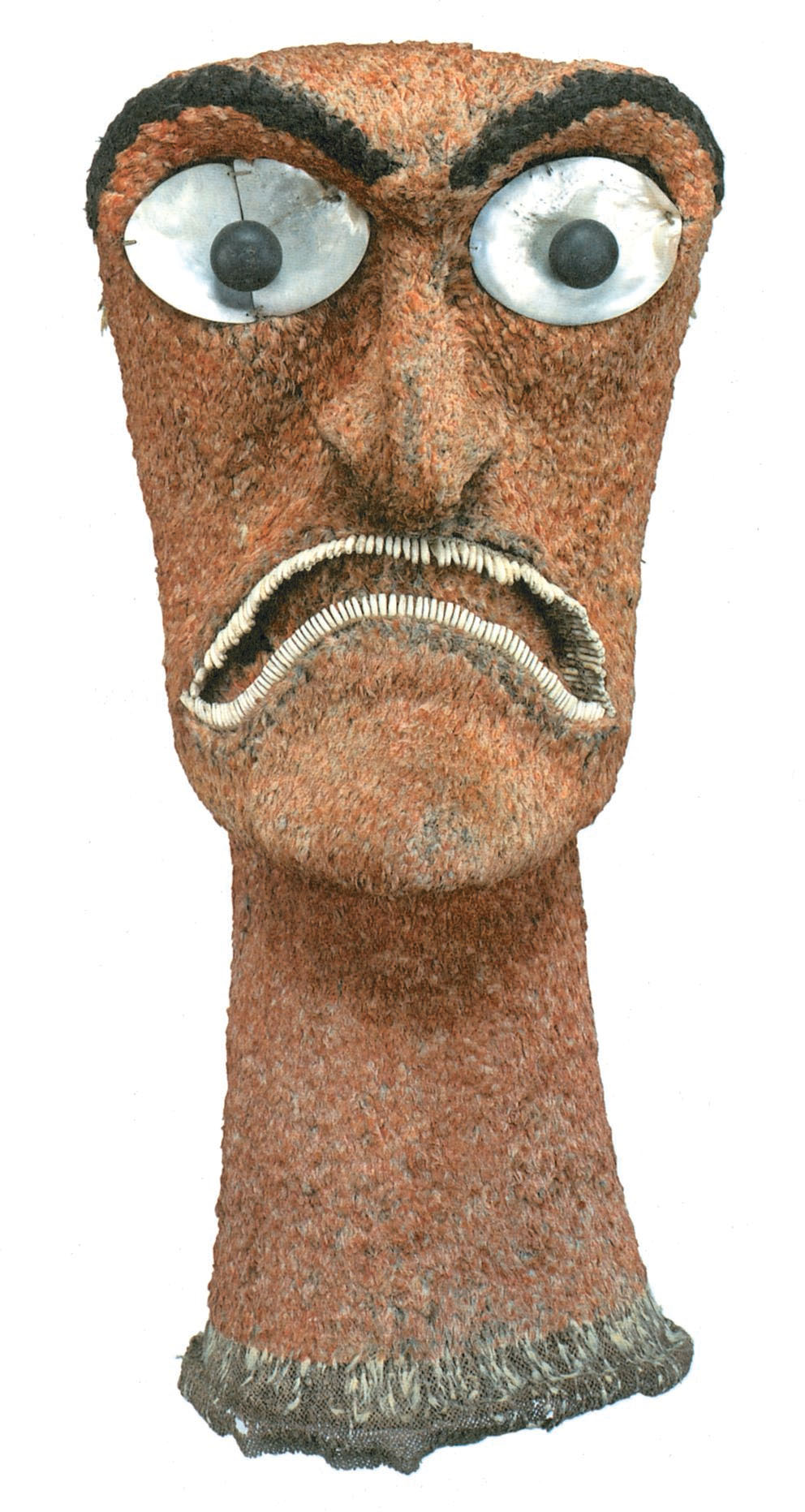
After stopping at Tesco to pick up picnic goods, we returned to the village cricket grounds where the good local side was playing a match against much larger Diss. On a normal weekend, the grounds would be full of local supporters coming and going and having a pint from the bar in the pavilion. This afternoon it was very quiet. Most folks were home watching England’s first World Cup game against Paraguay. There was a TV set up in the pavilion to keep the cricket players abreast of the game going on in Germany. At 3, I tore myself away from the idyllic scene, said my goodbyes and hit the road.
[caption id="HandsAcrossTheSea_img6" align="aligncenter" width="600"]
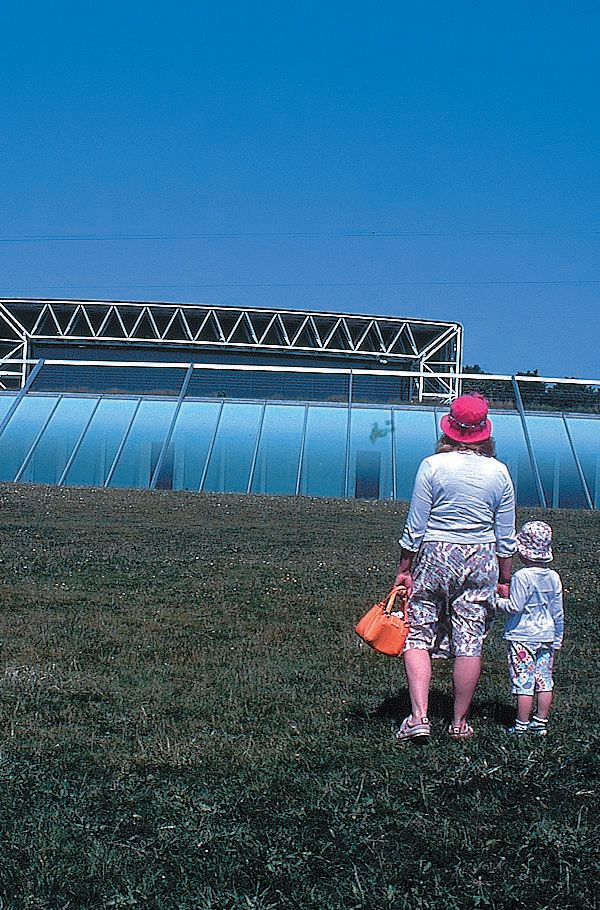
In 30 years of driving in England, I can never remember quieter roads; everyone was watching the England match. I made my way down to Bury St. Edmunds to visit St. Edmundsbury Cathedral and take some pictures in the Close and churchyard. Then I turned west to Cambridge and across the Home Counties to Bedford, Milton Keynes and who knows. I stopped in Buckingham about 7 looking for a place to stay; the only inn was having a World Cup party, and, blessedly, full. Bicester didn’t have a room in the town center either. So, I ended up about 8:30 in the market town of Witney, 20 miles west of Oxford, and got a room at the Fleece Inn on the town green. I visited with friendly folk celebrating at the bar and had a cold supper in front of the window opening onto the twilight.
[caption id="HandsAcrossTheSea_img7" align="aligncenter" width="591"]
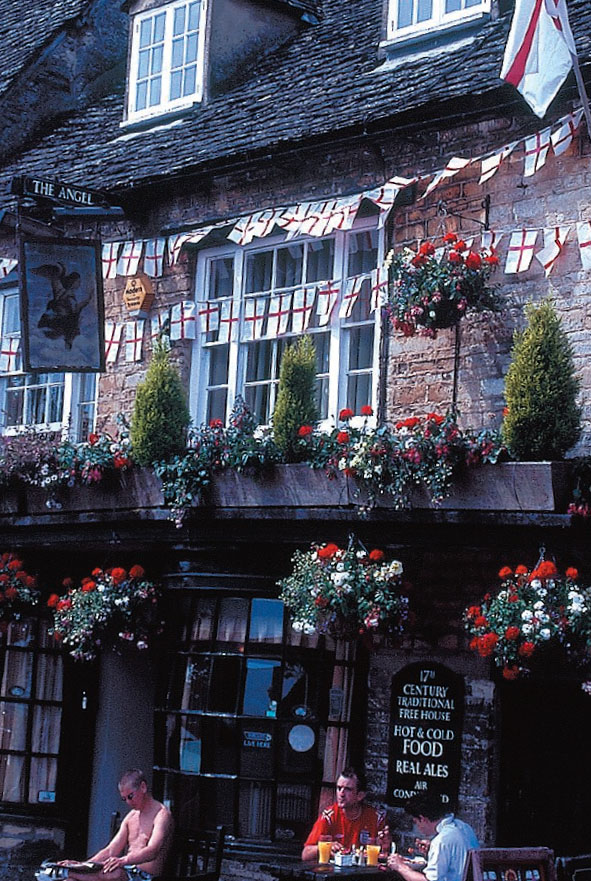
Sunday
It was a languid summer Sunday morning across England. The country was nursing itself through something of a national hangover following celebrations of England’s victory. The sun was very warm. Young families and older folk were crossing the Green to church, and the bells were ringing as I signed out of the Fleece and headed into the Cotswolds. I stopped in Minster Lovell to wander through the 16th-century ruins of Minster Lovell Hall along the River Windrush, and cruised the popular High Street of Burford, already busy with coachloads of eager tourists browsing the antique shops and cafes.
[caption id="HandsAcrossTheSea_img8" align="aligncenter" width="983"]
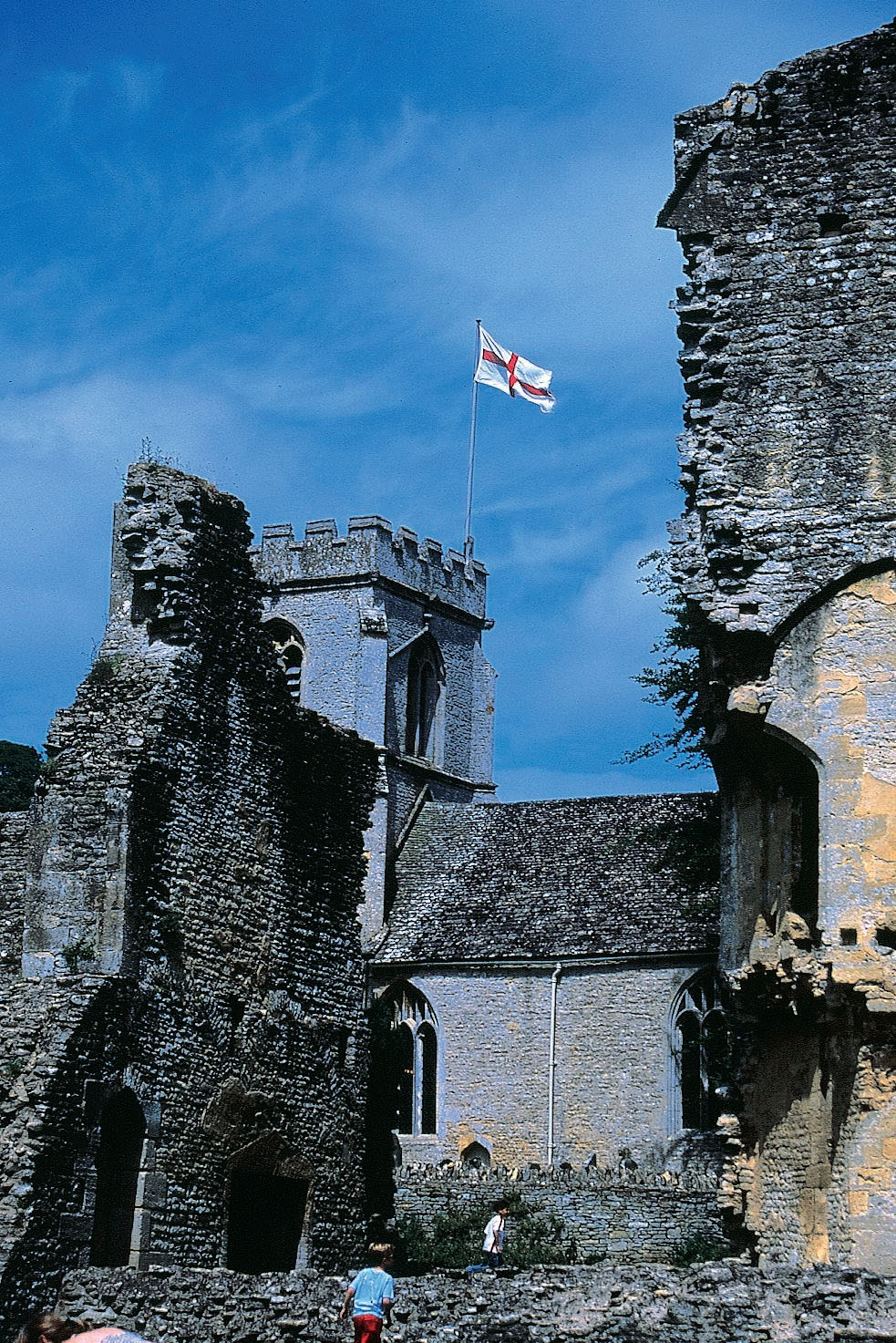
Turning south toward Lechlade, I pulled in to the Cotswold Wildlife Park and Gardens. It was a hot day for a visit to the zoo, but proved a popular family getaway, and understandably so. The immaculately landscaped park houses everything from white rhinos to penguins, with walled gardens and a narrowgauge railway. It was half-past lunchtime when I got to Fairford and put in at the Eight Bells just in time to get the last of the Sunday roast beef. The World Cup was on and the locals were already several pints into the afternoon. At Cirencester I turned south and stopped in Tetbury to refresh myself with the market town and visit with Philip Gibbons at Tetbury Old Books Ltd. Prince Charles’ Highgrove estate is here, just a couple of miles from the town center.
[caption id="HandsAcrossTheSea_img9" align="aligncenter" width="688"]
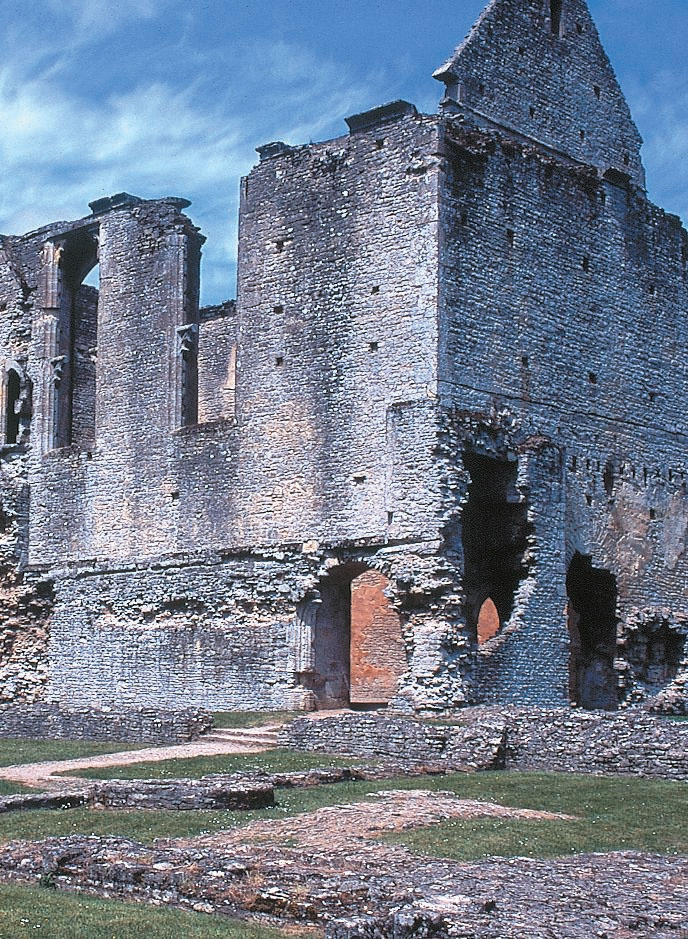
The vague idea that I might stay in Bristol that night proved to be a big mistake. Central city Bristol is under major roadworks, and I spent an hour in the heavy traffic and dust of the city before calling it quits. My mind’s eye recalled a pretty little hotel in the Welsh border town of Chepstow. I made straight for the ring road and across the Severn Bridge to Wales, and checked in at the Castle View Hotel at about 7:30. After washing the dust of the road and exploring the center of a town I’ve visited many times, I took a pork cutlet and salad in the hotel garden. I had found the story I wanted.
[caption id="HandsAcrossTheSea_img10" align="aligncenter" width="575"]

[caption id="HandsAcrossTheSea_img11" align="aligncenter" width="689"]
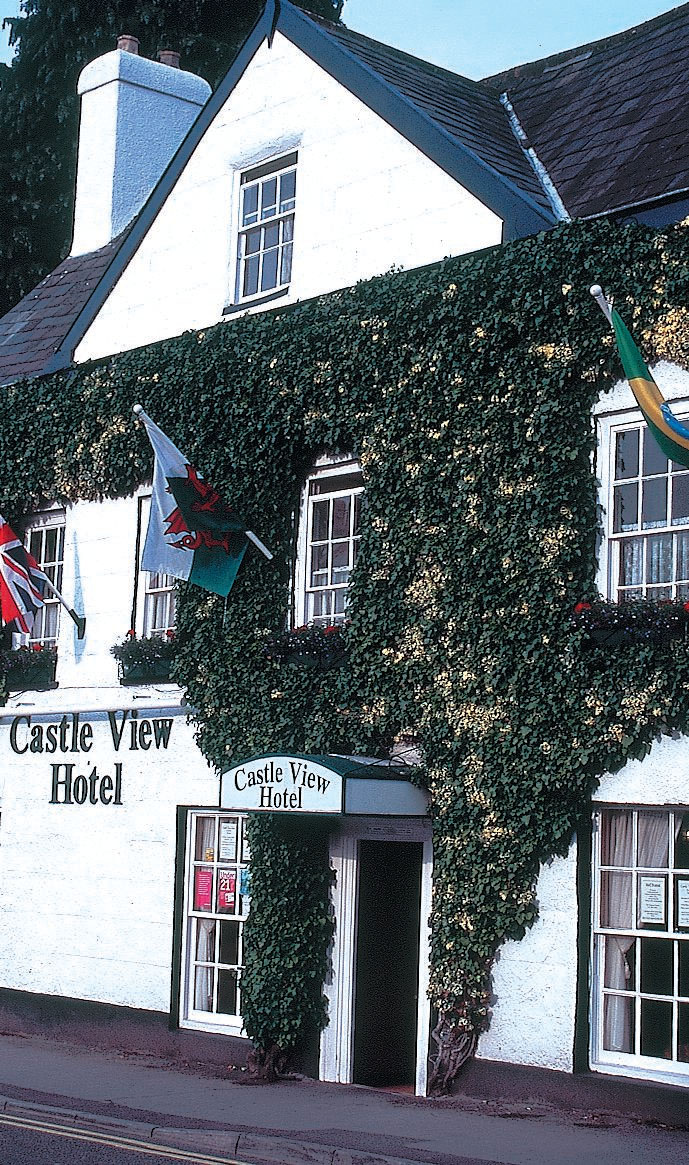
Monday
Iwas out with my camera on the narrow streets of Chepstow as the market town was coming to weekday life. Just a hundred yards down the street, the 1816 wrought-iron bridge still carries light traffic across the River Wye into Gloucestershire, England. From the bridge, you get great views of Chepstow Castle, the oldest stone castle in Britain. It was built in William the Conqueror’s day to guard access into Wales where the River Wye empties into the Severn Estuary. But it was a hazy day for pictures. I chatted about the town with folk at the Tourist Information Centre and much enjoyed local history at the Chepstow Museum.
That afternoon I drove up the narrow river valley past Tintern Abbey and through Tintern Parva, and then took the real back tracks up over the hills to the village of Trellech. Two miles down a single-track road from the village, the lane continues unpaved and summer grasses brush both sides of the car. At the end of the lane, I visited with Siân Ellis in her bright farmhouse.
On the way back in to Chepstow, I parked on the outskirts of town and found an unmarked break in a high brick wall into a forest of old-growth hardwoods. Following the path, I came out a quarter-mile later onto a forest road and then broke into green, undulating parkland perhaps half a mile broad, replete with grazing sheep. Across the park lay the ruined facades and tattered gardens of Piercefield House, abandoned in 1923 and crumbling to dust out of sight in the deep country of Monmouthshire. But that’s part of the Chepstow story. It was getting quiet for the evening when I got back into town. I had yesterday’s roast beef in the lounge bar at the Castle View before going out again to find a pub and visit with the local folk.
[caption id="HandsAcrossTheSea_img12" align="aligncenter" width="967"]
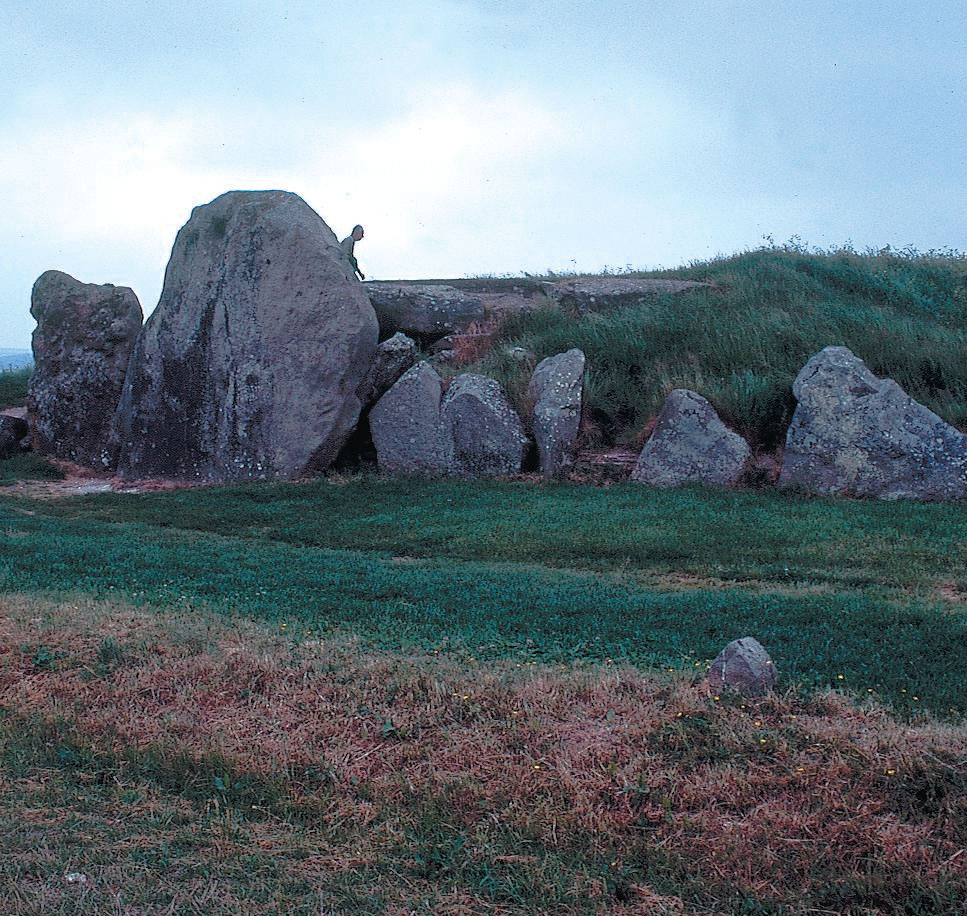
Tuesday
The glowering clouds of yesterday broke long enough this morning for me to climb around Chepstow Castle and get some good pictures of the Wye Valley. I drove up through Tintern again and stopped at the Stella bookshop, adding a volume of John Betjamin to my modest collection. By the time I got to Monmouth, the sky was dark again. While I was exploring the county town, it started to rain. I was soaked by the time I ducked into Greggs the Bakers and picked up a Cornish pastie and a chicken-leek savory for lunch. I ended up eating them during a downpour in a layby on the A40—heading for Caerphilly.
There was no room at the inn by the time I got to Caerphilly, and there aren’t a lot of options in this old Welsh castle town. I ended up at a serviceable B&B, rendezvoused with my old mate Norman Jarrett and went up to his house in Pontllanfraith. We visited in the garden and had a lovely Welsh lamb roast for tea before heading to town for rehearsal of the Caerphilly Male Voice Choir (see July 2006). It was grand fun to sing again with the Caerphilly lads as they prepared for their 100th anniversary concert that Saturday night. After rehearsal, Norman and I repaired to The Cedar Tree for a few pints, while the World Cup played in the background.
Wednesday
My missions were accomplished, and I was running out of steam. I crossed the Severn again heading toward London on the M4. East of Bath, I dropped down on to the A4, the quiet old road through Chippenham and Avebury that I’ve taken a score of times over the years. I stopped near Silbury Hill and hiked half a mile through the wheat field to the West Kennett Long Barrow, wandered Marlborough’s town center on Market Day and visited the library at Hungerford. By the end of the day, I’d returned the perky Peugeot to Avis at Heathrow, and I took a last pint on the Bath Road, watching the World Cup, of course, and ready for the morning flight home.
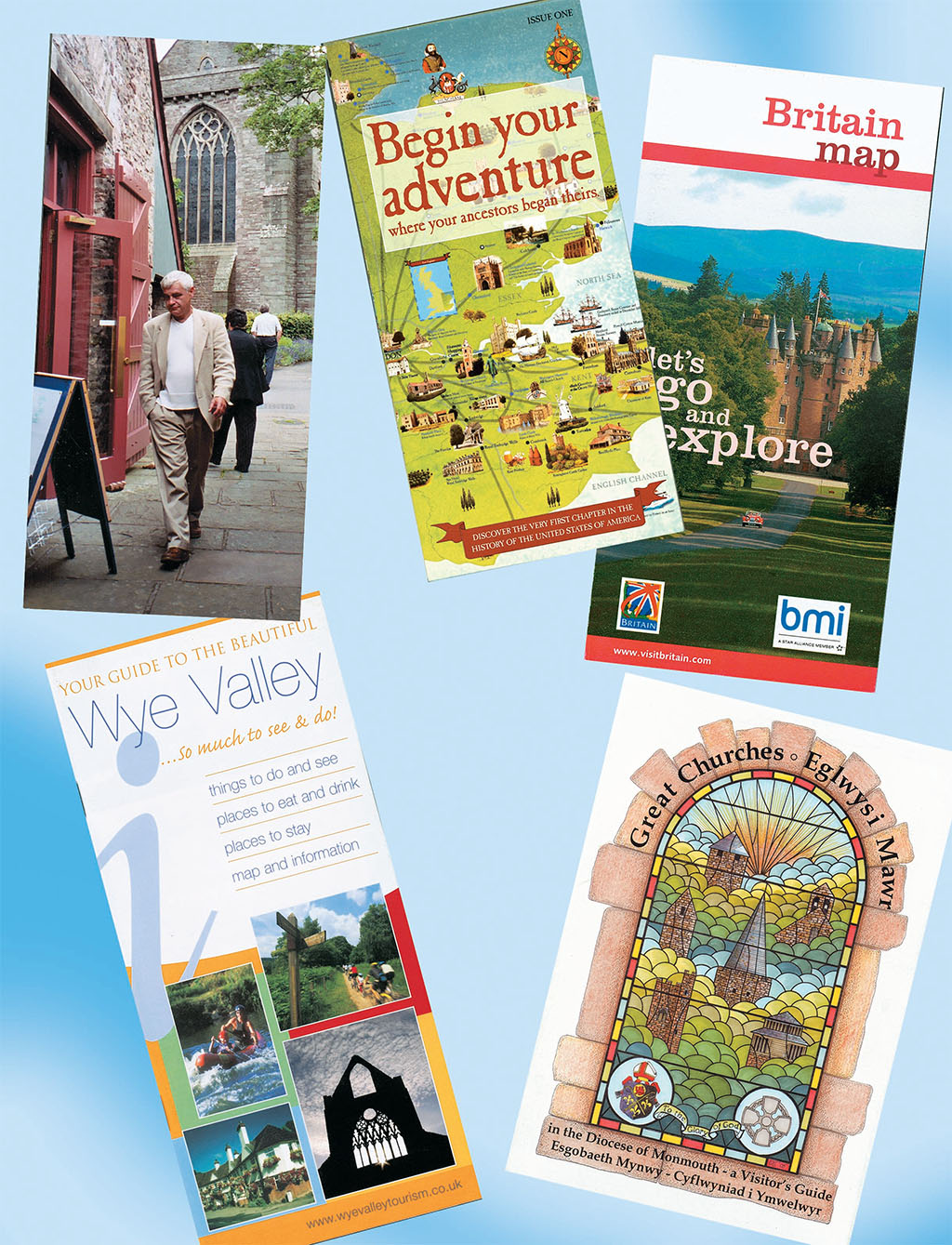
From the last of the Sunday roast beef to the twilight over Chepstow Castle, travel in Britain is always a kaleidoscope of adventure across the centuries.





Comments